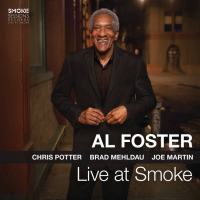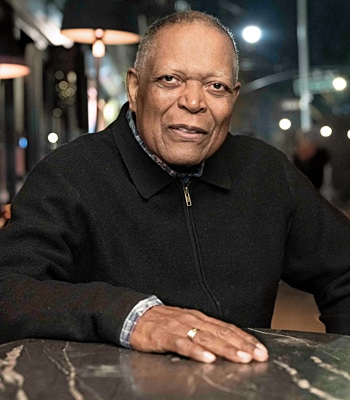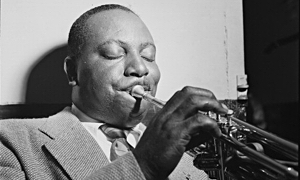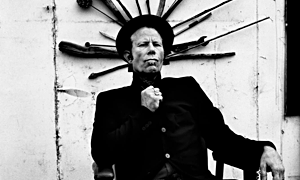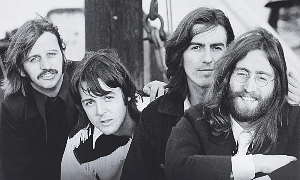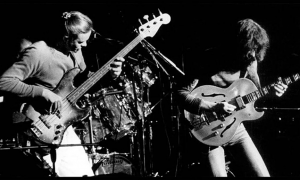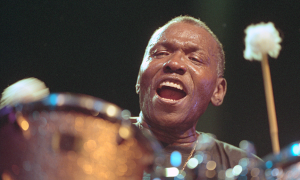Home » Jazz Articles » Book Review » Graham Parker's Howlin' Wind
Graham Parker's Howlin' Wind
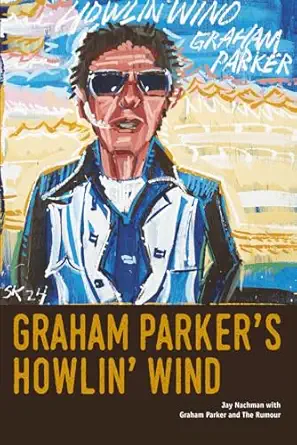 Graham Parker's Howlin' Wind
Graham Parker's Howlin' Wind Jay Nachman
247 Pages
ISBN: #979-8299219296
Self Published
2025
About fifty pages into the two hundred forty-seven total of Jay Nachman's Graham Parker's Howlin' Wind, the narrative turns distinctly cinematic, right in keeping with a kinetic cover painting by Steve Keene much superior to the cut-and-past of the album art. From that point on, the book reads like the novelization of a film, graphically depicting in prose the increasingly worldly adventures of a lower class musiclover slowly but surely finding his voice as a songwriter and performer, reaching his artistic peak in the company of and synergy with a crack band at the pinnacle of its own powers.
To Nachman's credit, the brisk pace hardly lapses as Parker emigrates from his English hometown of Deepcut (given his cult following, how appropriate is that name?). With Morocco as his destination, the subject of this improbable sojourn encounters friendlier characters in his globetrotting than in his native environs, sharing his devotion for music as well as all of the other abiding interests he pursues.
The author reasonably shifts gears as he lays out 'The Roots of The Rumour' as Graham Parker's backing band. But the sage and sardonic observations from guitarist Brinsley Schwarz match the tone of healthy detachment shared by Jay Nachman and the other principals in this story (who share writing credit for this project); for these men, and indeed all those involved who deigned to speak with the author, hindsight is twenty-twenty in the most positive sense.
Keyboardist Bob Andrews is the first to join forces with Schwarz to be followed shortly by guitarist Martin Belmont. The latter remains still a confrere to Graham Parker to this day and in these early stages helped forge the unity of the quintet with the addition of bassist Andrew Bodnar and drummer Stephen Goulding. During this same time, future producer Nick Lowe was still inhabiting the fringes of the scene that would be known as 'pub-rock' (not just as a member of the Brinsleys).
The pace of the prose flags somewhat in Nachman's early accounts of the latter group' development, As the writer follows the group's evolution, however, the tempo picks up in such a clear-cut , it's as if in reflection of the band's progression and quite possibly the author's own level of interest. Regardless, the pace matches the time elapsed as these events take place.
To that end, suspense turns palpable in Graham Parker's Howlin' Wind coincidental with the future frontman's progressively driven ambitions as a songwriter and a performer, particularly as his aims become increasingly clarified to accommodate the proper accompanists. Here it is that this book, distributed independent of larger publishing houses, most clearly suits the willful iconoclasm of its main subject.
The filmic correlations with this tome become all the more apt when Dave Robinson, co-founder of Stiff Records, enters the picture in the final fourth of the storyline. After building his own recording studio below the London pub Hope and Anchor, the latter is the focal point of all the action involving the coalescence of the union of Graham Parker and the Rumour.
Prudently inserted photos and memorabilia, like those on pages eighty-two and two hundred-twenty respectively, aid in anchoring Nachman's artful depiction of the transitions from Robinson's perspective to that of Parker's and, in turn, the individuals within the Rumour. In so doing, the timeline almost but not quite begs the question of whether the pairing was destiny pure and simple and similar thoughts arrive upon Nick Lowe's entry into the proceedings as producer of the Howlin' Wind (Mercury, 1976) album sessions.
In his own account of the recording, the future member of Rockpile (with Dave Edmunds who, not coincidentally, plays on the LP) evinces no small confidence (albeit the most casual sort) in his abilities to produce an album reflective of the artists' talents. Clearly, it was an attitude sufficiently infectious to bolster the performers' own self-assurance and, in turn, allow them to imbue the performances with a robust vigor in keeping with Graham Parker's own self-assessment of his skills.
The oft-misused truism about 'a marriage made in heaven' comes to mind more than once as the book reaches its conclusion. Yet the impression arises only insofar as it reminds one that such cliches contain that kernel of truth that has rendered them so widely applicable. In the final pages, the seamless transformation from this author's third-person voice to his first-person vantage point at first seems too clever for its own good, but only until that portion of the publication titled "Swing Time Is Here Children."
This detailed track-by-track exposition on the even dozen cuts constitutes an epilogue to the main body of this work that resembles nothing so much as the fitting encore to a stellar musical performance. The segment simultaneously sums up and recapitulates the power of not only the album itself, as a supremely creative and eclectic piece of work, but also the combined power of Parker and the Rumour as a collective musical force.
Nuanced references to stylistic sources of both the material and the musicianship therein reveal the deceptively sophisticated influences interwoven into recordings such as "Don't Ask Me Questions:" bassist Andrew Bodnar, for instance, reveals the sources of his instrumental patterns derived from the early Wailers, among others.
Such knowing revelations are indicative of the preparation both conscious and unconscious that formed the basis for Graham Parker and the Rumour's debut. In so vividly formulating the vision of the project with as much depth as breadth, Jay Nachman effectively (and wisely?) precludes attention to the LP's comparably striking successor.
Heat Treatment (Mercury Records, 1976) was released a mere six months after its predecessor and while this sophomore issue is arguably the equal of the prior record, it is best left mentioned only in passing as Graham Parker's Howlin' Wind reaches its understated denouement: to go on about the second record would dilute the drama in intrinsic to this account of musicianly adventures.
Mentioned only in passing, it rightly seems like the aftershock of the impact represented by the earlier longplayer, an effort that may or may not be fodder for another project Jay Nachman can execute with a similar combination of healthy detachment and unflagging passion.
Tags
Book Review
Graham Parker
Doug Collette
Independent
the Rumour
Brinsley Schwarz
Nick Lowe
Dave Edmunds
PREVIOUS / NEXT
Support All About Jazz
 All About Jazz has been a pillar of jazz since 1995, championing it as an art form and, more importantly, supporting the musicians who make it. Our enduring commitment has made "AAJ" one of the most culturally important websites of its kind, read by hundreds of thousands of fans, musicians and industry figures every month.
All About Jazz has been a pillar of jazz since 1995, championing it as an art form and, more importantly, supporting the musicians who make it. Our enduring commitment has made "AAJ" one of the most culturally important websites of its kind, read by hundreds of thousands of fans, musicians and industry figures every month.






